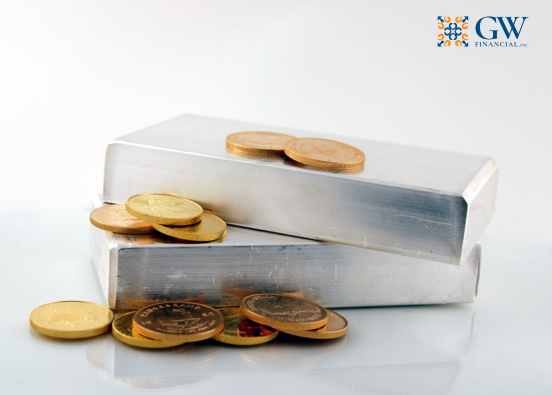Gold and Silver in Your Investment Portfolio: An In-Depth Look
While gold and silver can play a role in diversifying a portfolio, it’s important to weigh their benefits against their drawbacks.
Investing in precious metals like gold and silver has been a popular topic among investors, especially during times of economic uncertainty. While these assets offer some benefits, it’s crucial to understand their role in a diversified investment strategy and the potential drawbacks they present. In this article, we’ll explore the pros and cons of including gold and silver in your portfolio and why our investment philosophy emphasizes long-term growth over short-term gains.
Pros:
- Diversification: Gold and silver often behave differently from other asset classes like stocks and bonds. This non-correlation can help reduce overall portfolio risk, especially during market downturns.
- Tangible Asset: Both gold and silver are tangible assets, which can provide a sense of security and physical possession. They are often viewed as safe havens during times of economic uncertainty.
- Inflation Hedge: Historically, gold and silver have been considered good hedges against inflation. As the cost of living increases, these metals tend to retain their value better than paper currency.
Cons:
- Limited Long-Term Growth: Over extended periods, gold and silver have not kept pace with inflation or provided significant long-term growth compared to stocks or bonds. Their returns tend to be lower than more diversified investment options.
- Volatility: Precious metals can be highly volatile. Their prices can fluctuate significantly over short periods, which can be risky for investors looking for stable returns.
- Lack of Income: Unlike stocks or bonds, gold and silver do not generate income such as dividends or interest. This lack of regular income can make these metals less attractive for investors seeking steady cash flow.
- Storage and Security Concerns: Physical gold and silver require secure storage, which can involve additional costs for safekeeping. There is also the risk of theft or loss.
- Liquidity and Transaction Costs: Selling physical gold and silver can be more costly and less straightforward than selling other types of investments due to higher dealer premiums and shipping fees.
Gold and Silver ETFs
For those interested in gaining exposure to gold and silver without the hassles of physical storage, ETFs (Exchange-Traded Funds) offer a convenient alternative.
- SPDR Gold Shares (GLD): The largest gold ETF with over $55 billion in assets under management. GLD holds physical gold bullion and offers high liquidity, closely tracking the spot price of gold.
- iShares Gold Trust (IAU): Known for its low expense ratio, IAU provides cost-effective exposure to gold prices. It holds physical gold in secure vaults.
- abrdn Physical Gold Shares ETF (SGOL): With a low expense ratio, SGOL offers a cost-effective way to invest in gold, holding physical gold bars in vaults in Zurich and London.
For silver, ETFs such as iShares Silver Trust (SLV) and Aberdeen Standard Physical Silver Shares ETF (SIVR) offer similar benefits, providing exposure to silver prices without the need for physical storage.
Comparing Performance
When comparing the performance of gold and silver ETFs to other investment options, such as the Dimensional Global Equity Fund (DGEIX) and the Bloomberg Barclays Bond Index, it’s clear that while precious metals may have higher recent performance, they often lack the long-term stability and growth of more diversified portfolios.
Our Investment Philosophy
At GW Financial, Inc., our investment philosophy focuses on long-term growth and wealth preservation. While gold and silver can offer diversification and act as a hedge against inflation, their volatility and lack of income make them less compelling for long-term investment strategies. Our approach emphasizes diversified portfolios that include stocks and bonds, which have historically provided more consistent and higher returns over time.
While gold and silver can play a role in diversifying a portfolio, it’s important to weigh their benefits against their drawbacks. Our team is here to help you navigate these decisions and ensure your investments align with your long-term financial goals. If you have any questions or would like to discuss this further, please feel free to reach out to us.
The content is developed from sources believed to be providing accurate information. The information in this material is not intended as tax or legal advice. It may not be used for the purpose of avoiding any federal tax penalties. Please consult legal or tax professionals for specific information regarding your individual situation. This material was developed and produced by GW Financial, Inc. to provide information on a topic that may be of interest. The opinions expressed and material provided are for general information, and should not be considered a solicitation for the purchase or sale of any security. Copyright 2024 GW Financial, Inc.

